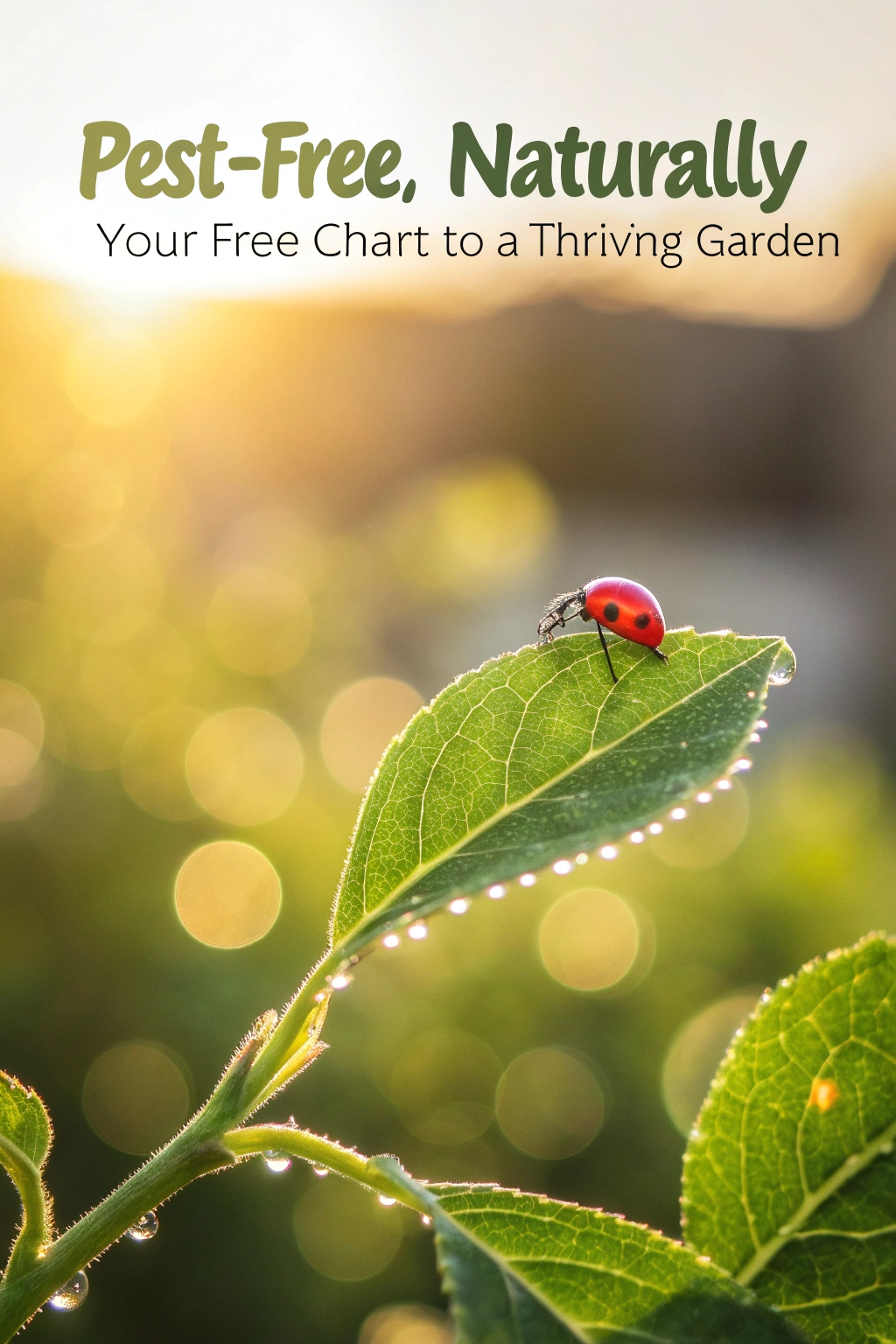Tired of winter killing your garden? Cold climates make growing plants tricky, but it’s possible! With smart tips, you can grow veggies and flowers all year.
Choose plants that survive frost and use special tricks to stay warm.
Grow cold-hardy plants like carrots and kale. Use raised beds to keep roots safe.
Add colorful flowers for beauty even in snow. Make your garden thrive no matter the weather. Enjoy fresh food and pretty views all year.
Choose Cold-Hardy Vegetables
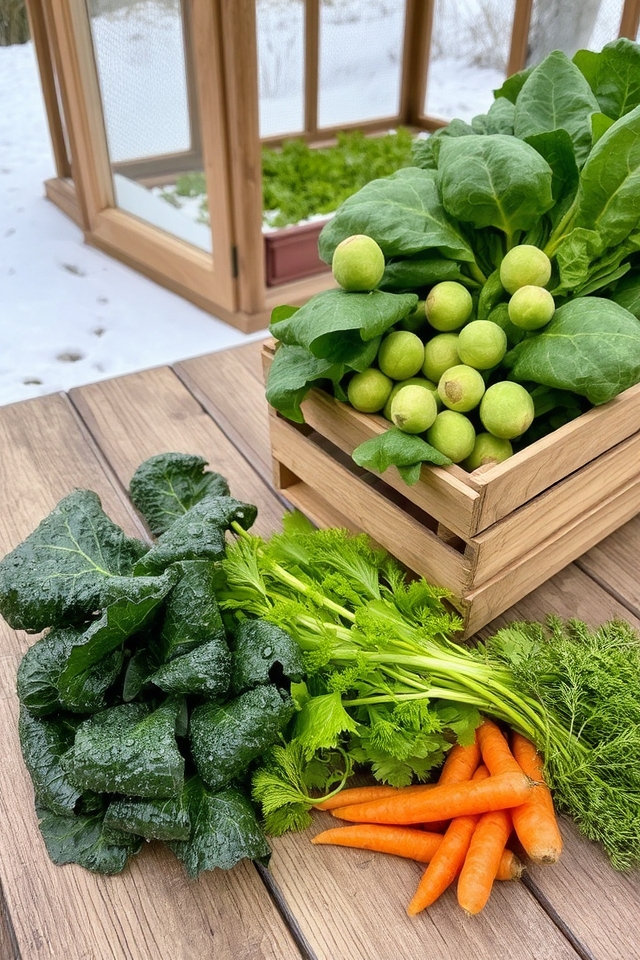
When gardening in cold climates, selecting cold-hardy vegetables is essential for a successful harvest. These resilient crops can withstand frost and thrive in lower temperatures. Popular choices include kale, spinach, carrots, and Brussels sprouts, which not only survive but often taste sweeter after a frost. Plan your planting schedule to maximize growth during cooler months, and consider using row covers or cold frames to extend your growing season and protect your plants from harsh conditions.
Utilize Raised Garden Beds
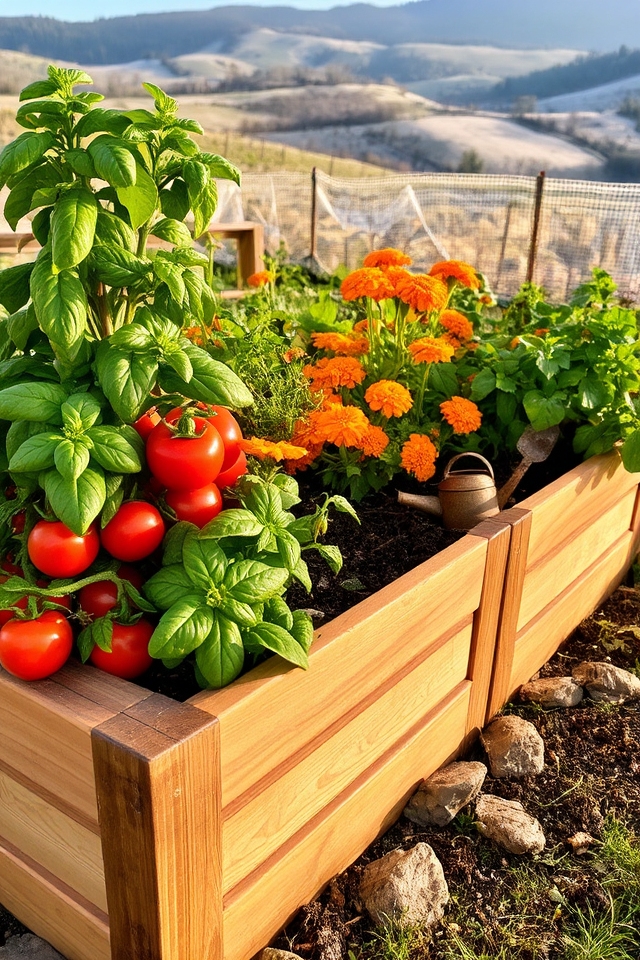
Utilizing raised garden beds is an excellent strategy for cold climates, as they provide better drainage and soil warmth compared to traditional gardening methods. Elevating the soil helps it warm up quicker in the spring, extending the growing season. Additionally, raised beds can be filled with high-quality soil and compost, offering a nutrient-rich environment for plants. They can also be covered with frost cloths or cloches during colder months, protecting delicate seedlings from harsh weather conditions.
Implement a Cold Frame
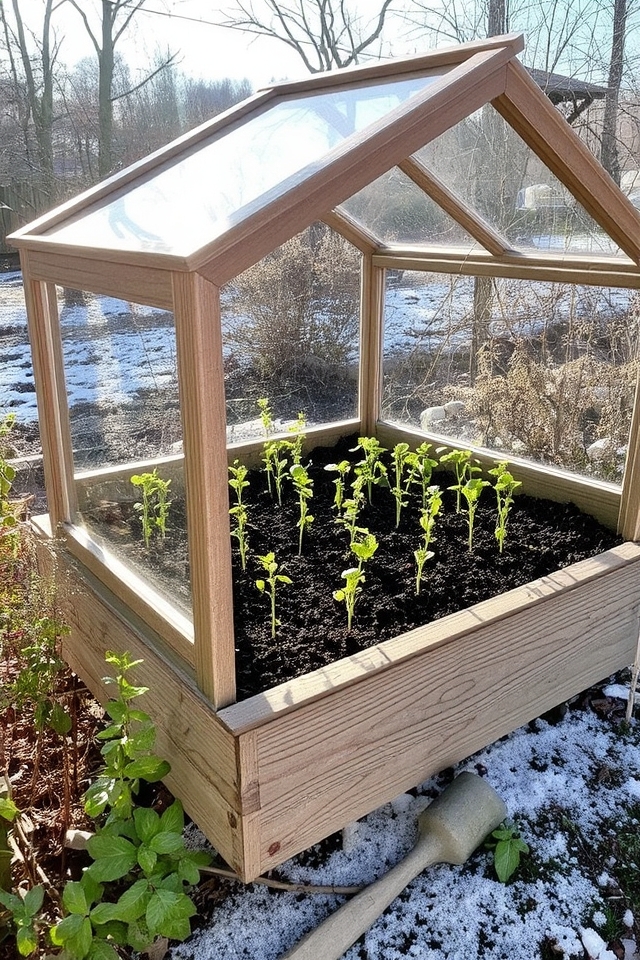
Implementing a cold frame is an excellent way to extend your growing season in cold climates. These unheated structures, typically made of transparent materials like glass or plastic, trap heat from the sun while shielding plants from harsh winds and frost. By positioning a cold frame in a sunny location, you can start seeds earlier in the spring and harvest later into the fall. They are perfect for nurturing fragile seedlings and even overwintering herbs, making them a valuable addition to any cold climate garden.
Start an Indoor Herb Garden
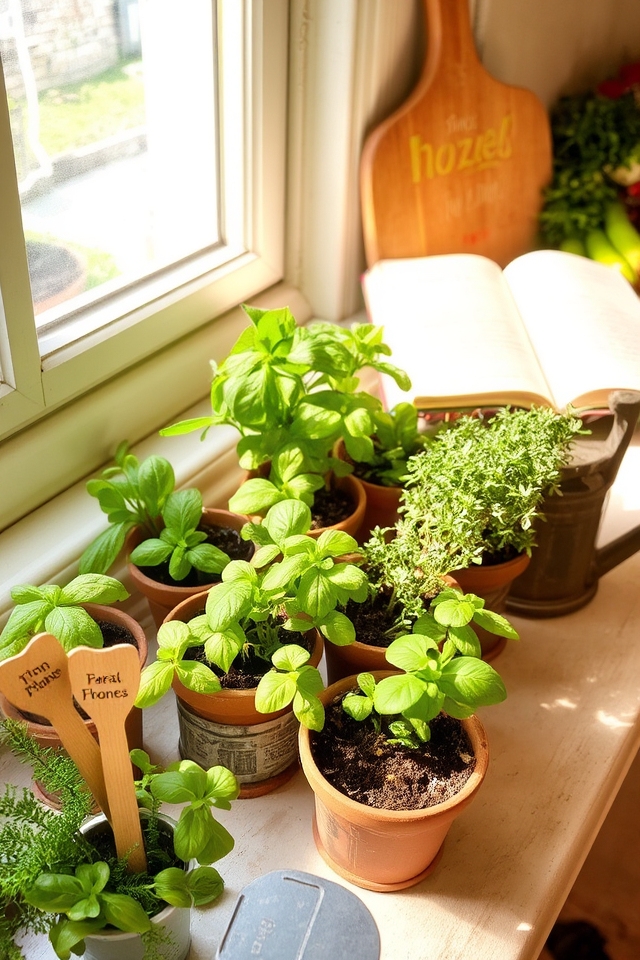
Starting an indoor herb garden is a fantastic way to add fresh flavors to your cooking, even in cold climates. Choose a sunny windowsill or use grow lights to provide ample light for herbs like basil, parsley, and thyme. Use well-draining soil and pots with drainage holes to prevent root rot. With regular watering and a little care, you can enjoy a year-round supply of aromatic herbs right from your kitchen!
Use Row Covers for Protection
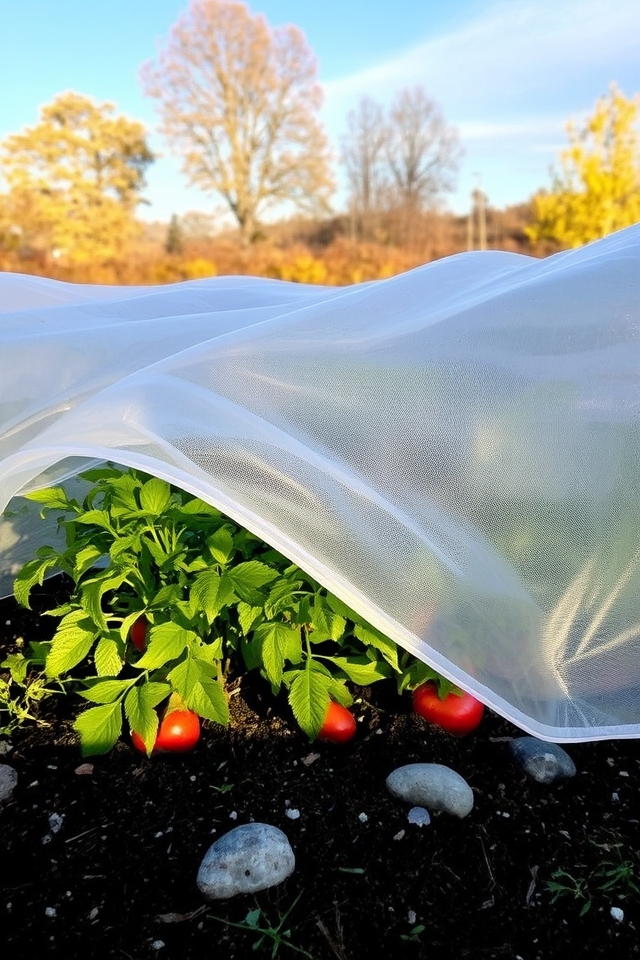
Row covers are an excellent way to protect your garden in cold climates. These lightweight, protective fabrics can be placed over plants to create a mini greenhouse effect, trapping heat and shielding them from frost, wind, and pests. When using row covers, it’s important to make certain proper ventilation to prevent overheating on sunny days. They are particularly effective for tender crops like tomatoes and peppers, extending the growing season and guaranteeing healthier plants throughout the colder months.
Consider Greenhouses
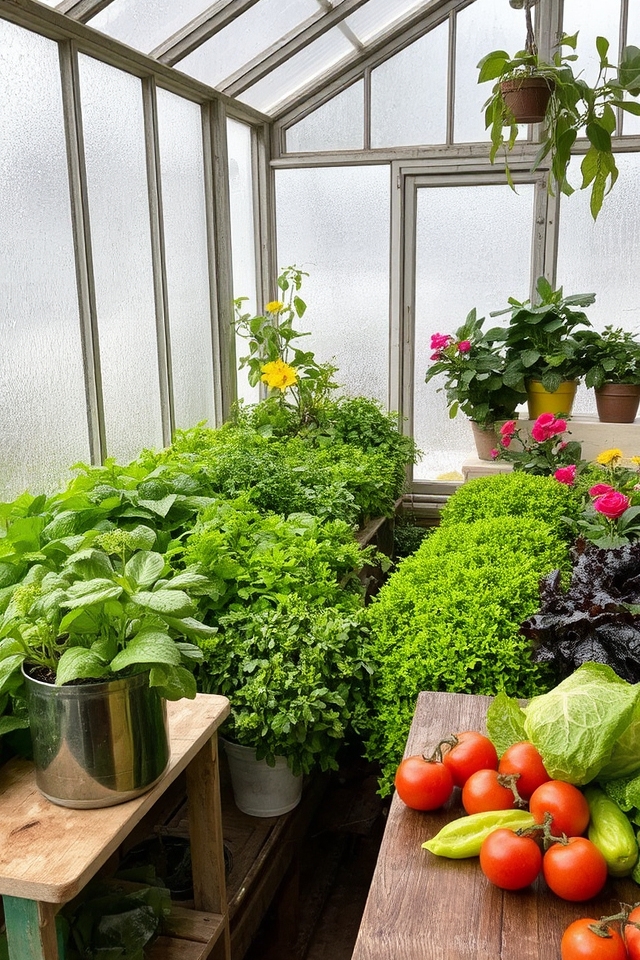
Greenhouses are an excellent solution for gardeners in cold climates, allowing you to extend the growing season and protect delicate plants from harsh weather. They create a controlled environment that can regulate temperature and humidity, promoting healthy plant growth year-round. Modern greenhouses come in various sizes and can accommodate everything from small herbs to larger vegetable crops. By utilizing a greenhouse, you can enjoy fresh produce regardless of the freezing temperatures outside.
Grow Perennials for Year-Round Blooms
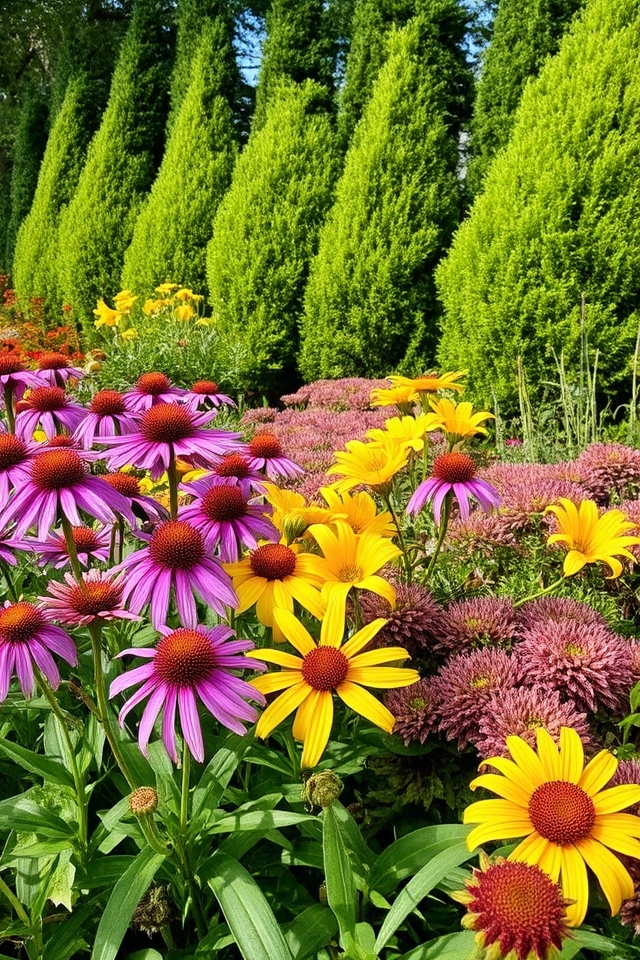
Growing perennials in cold climates can provide vibrant blooms and greenery throughout the year. Choose hardy varieties like coneflowers, sedums, and daylilies that can withstand harsh winters and emerge beautifully in spring. When planning your garden, consider layering perennials for visual interest and planting early, mid, and late blooming species for continuous color. Additionally, incorporating evergreens can create a striking backdrop, ensuring your garden remains lively even in the colder months.
Explore Winter Crop Varieties
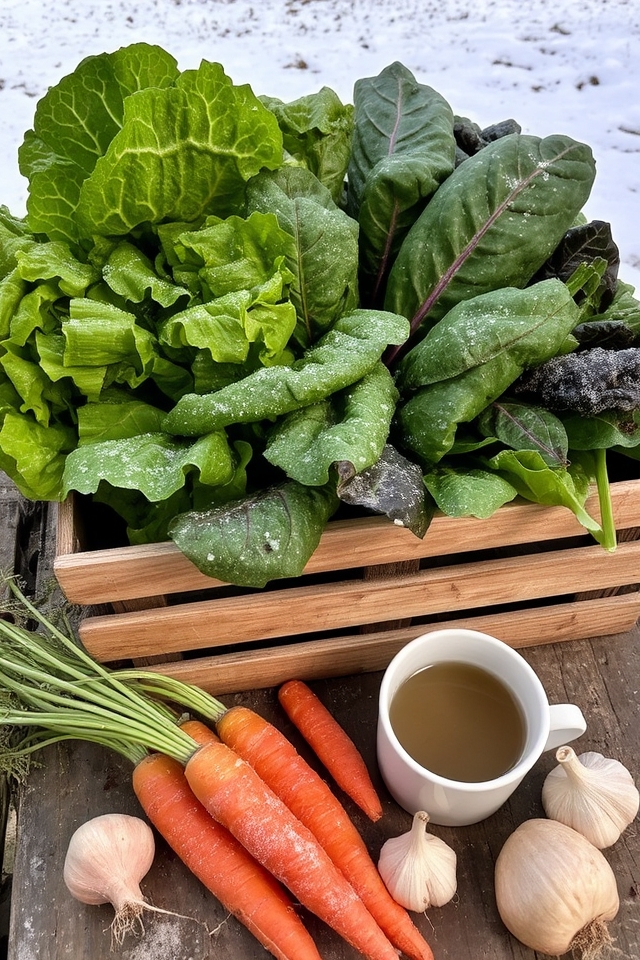
Exploring winter crop varieties is essential for thriving gardens in cold climates. These hardy plants, such as kale, spinach, and winter carrots, can withstand frost and maintain their flavor through chillier months. Other options like garlic and overwintering onion sets can be planted in fall, ready for harvest in spring. Utilizing cold frames or row covers can enhance growth and yield, allowing gardeners to enjoy fresh produce even in the depths of winter.
Create a Compost Bin
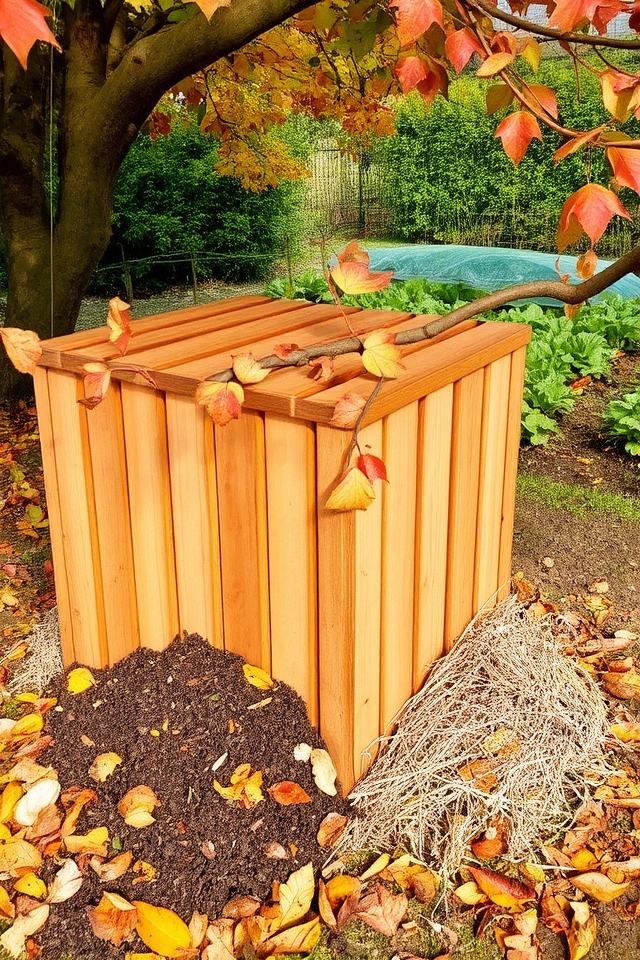
Creating a compost bin is an essential step for gardeners in cold climates looking to enrich their soil. Composting not only reduces waste but also produces valuable organic matter that can enhance soil fertility and structure. Choose a sturdy, well-insulated bin to help maintain heat during colder months. Layer green materials, like kitchen scraps, with brown materials, such as dried leaves, to create a balanced mix. Turning the pile occasionally encourages decomposition, transforming waste into nutrient-rich compost for your garden.
Install Windbreaks
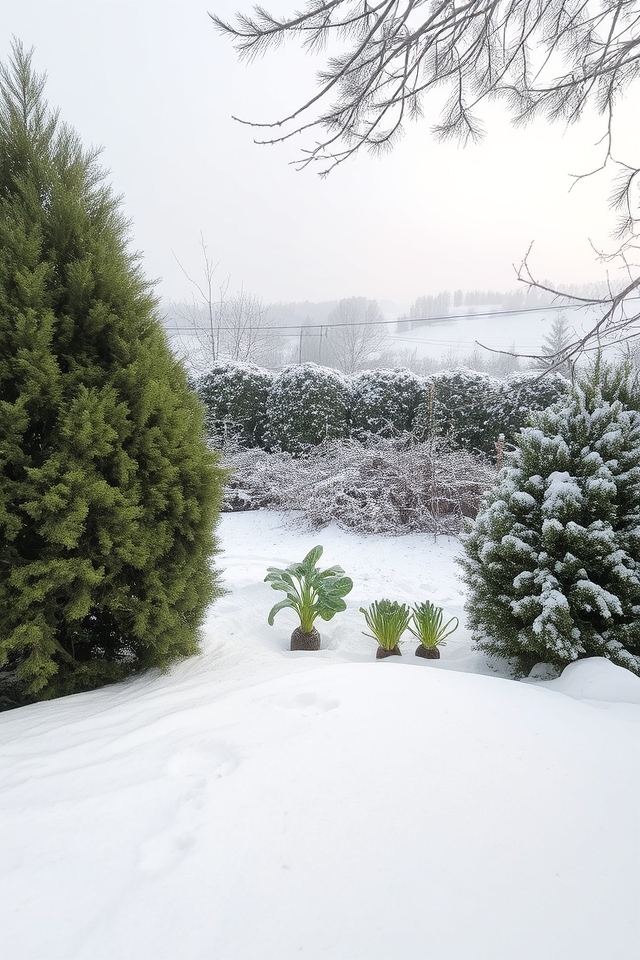
Installing windbreaks is an effective strategy for protecting your garden in cold climates. These barriers, made from trees, shrubs, or fences, help reduce wind speed and create a microclimate that can shield your plants from harsh elements. By strategically positioning windbreaks around your garden, you can prevent frost damage, improve soil moisture retention, and enhance overall plant growth. Choosing evergreen species or dense shrubs will provide year-round protection, making your garden more resilient to cold weather.
Use Mulch to Retain Heat
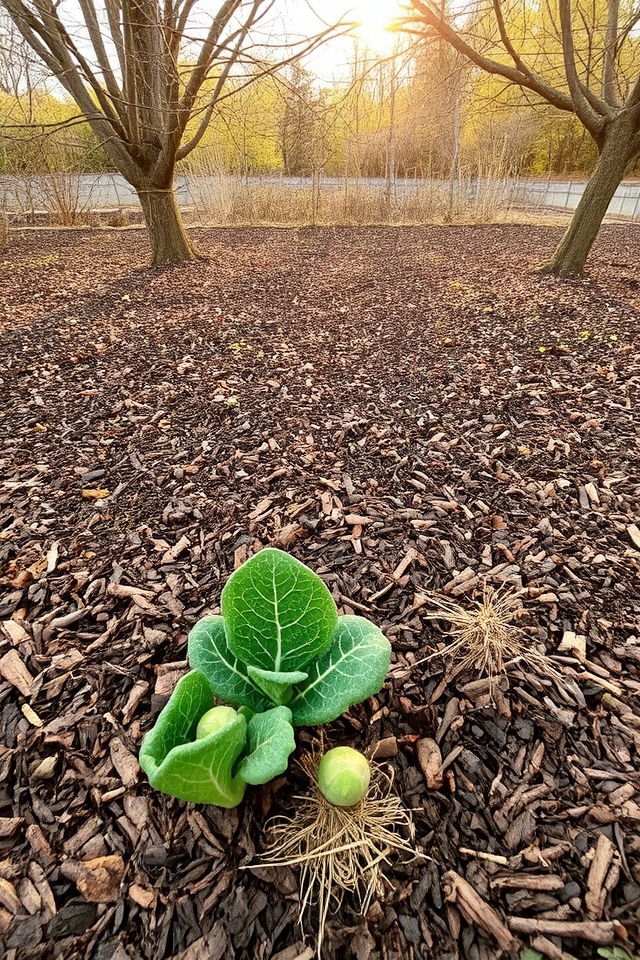
Using mulch in cold climate gardens is an effective strategy to help retain heat in the soil. A layer of organic mulch, such as wood chips, straw, or leaves, acts as an insulating barrier, preventing temperature fluctuations and protecting plant roots from extreme cold. Additionally, mulch retains moisture, reducing the need for frequent watering. By applying mulch around your plants, you create a more stable environment that promotes healthy growth even in harsh winter conditions.
Try Hydroponics
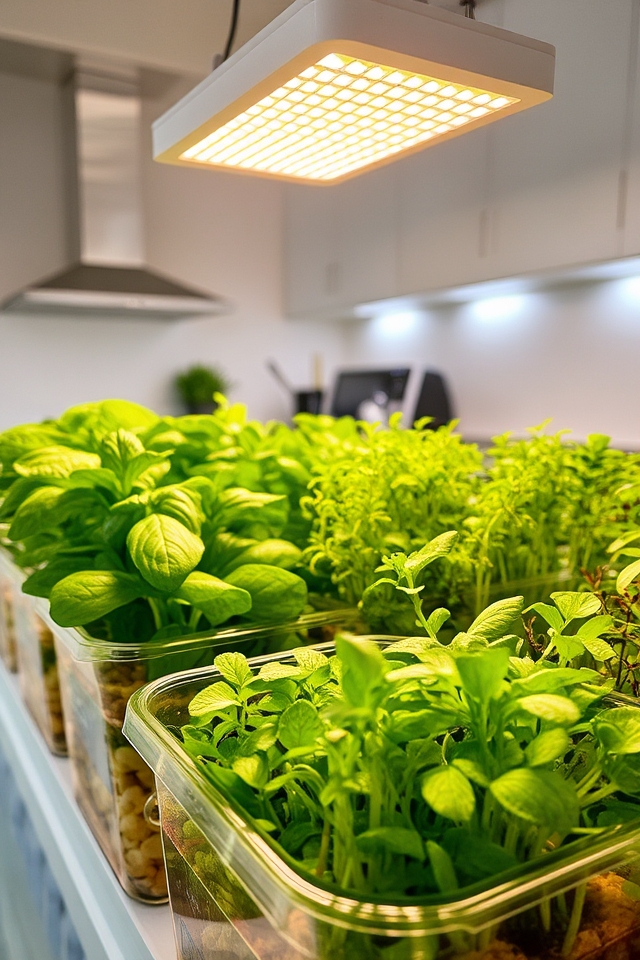
Hydroponics is an innovative gardening method that allows you to grow plants without soil, making it ideal for cold climates where traditional gardening can be challenging. By using nutrient-rich water solutions, you can cultivate a variety of plants, including herbs and leafy greens, indoors all year round. This system not only maximizes space but also provides ideal growing conditions, protecting plants from harsh weather while promoting faster growth and higher yields. Give hydroponics a try for a sustainable and efficient garden!
Plant Garlic in Fall
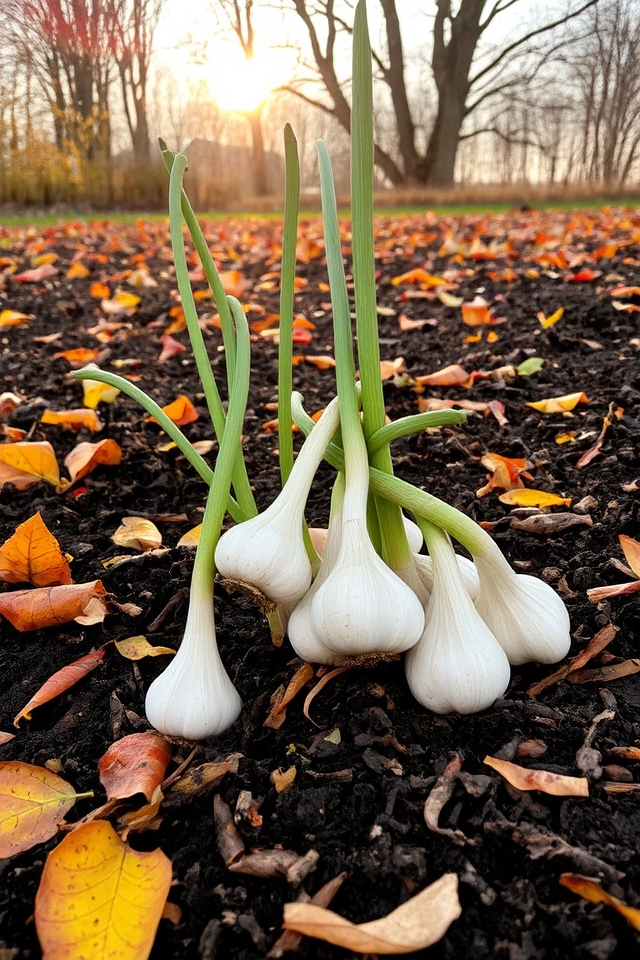
Planting garlic in the fall is an excellent choice for gardeners in cold climates. This method allows garlic to establish roots before winter sets in, leading to a robust harvest in late spring or early summer. Choose a sunny location with well-drained soil, and plant garlic cloves about 2 inches deep, spaced 4-6 inches apart. Mulching can help protect the bulbs from harsh winter temperatures. With minimal care, you can enjoy a bountiful garlic crop in just a few months!
Incorporate Edible Landscapes
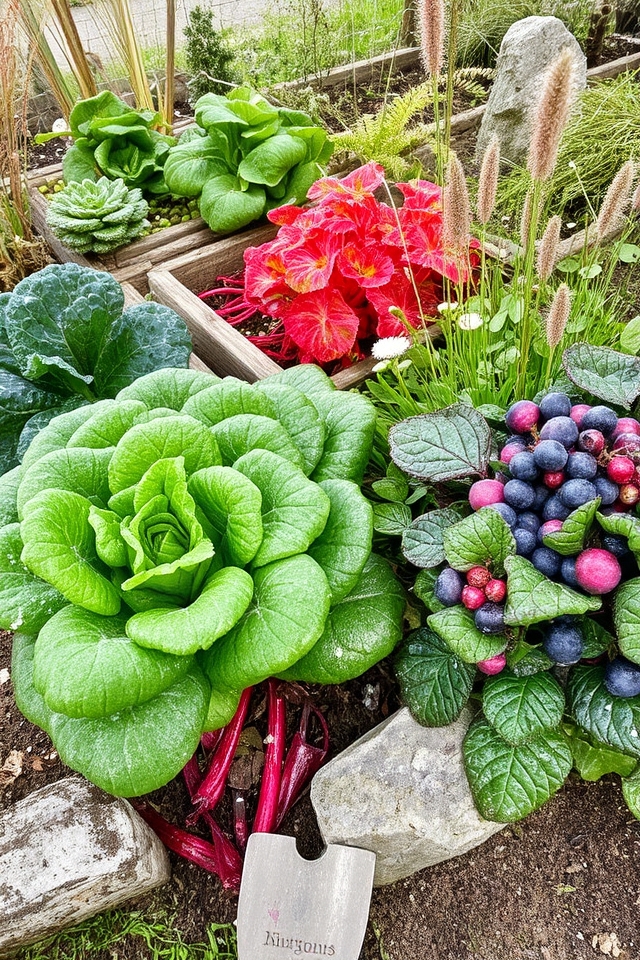
Incorporating edible landscapes into cold-climate gardens not only enhances beauty but also provides delicious yields. Focus on hardy perennials like rhubarb, asparagus, and certain berry bushes, which thrive in lower temperatures. Use raised beds to improve drainage and soil warmth, allowing for earlier planting of cold-tolerant vegetables like kale, spinach, and carrots. Mix ornamental plants with edible varieties for a visually stunning yet functional garden, creating a sustainable food source even in frigid conditions.
Select Native Plants
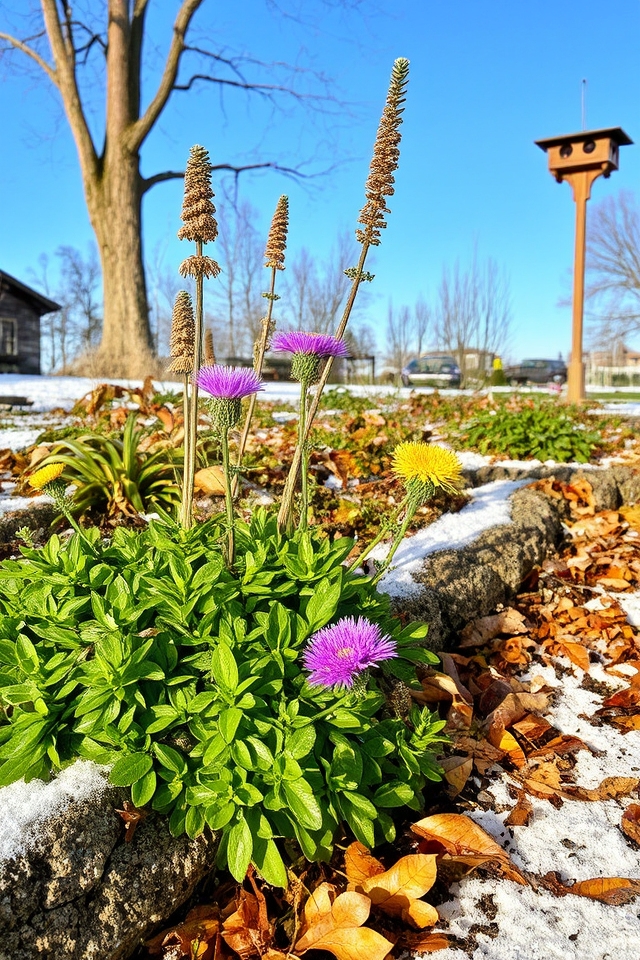
Selecting native plants for gardens in cold climates is essential for ensuring resilience and sustainability. These plants are adapted to local soil, weather, and ecological conditions, requiring less water and maintenance than non-native species. Additionally, native plants provide essential habitat and food for local wildlife, such as birds and pollinators. By incorporating native flora, gardeners can create vibrant, harmonious landscapes that thrive in harsh conditions while supporting local ecosystems effectively.
Use Heat Mats for Seed Starting
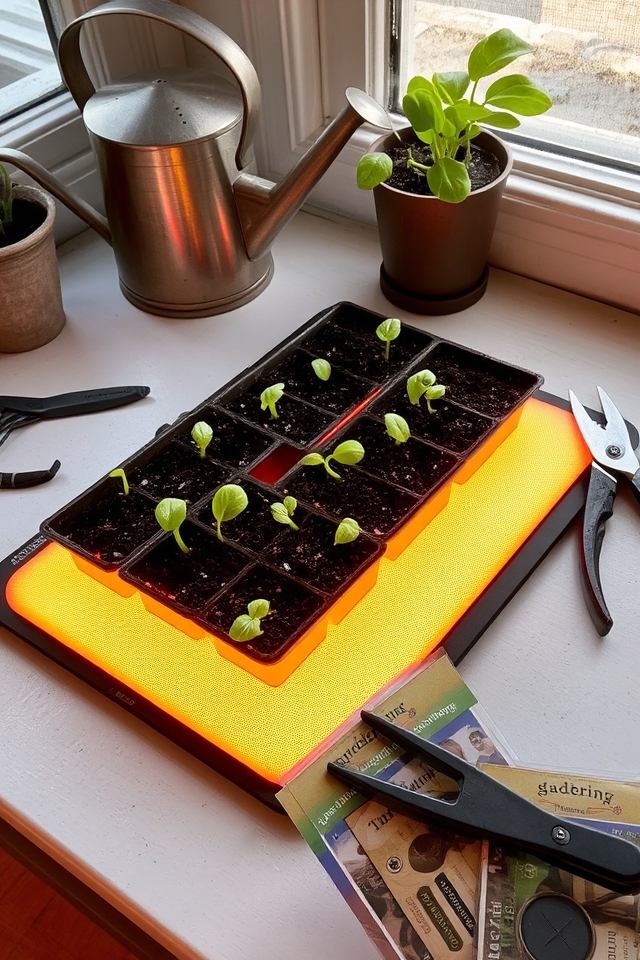
Using heat mats for seed starting is an excellent strategy for gardeners in cold climates. These mats provide consistent warmth that encourages germination by maintaining ideal soil temperatures. Seeds typically thrive at warmer temperatures, and heat mats can help jumpstart growth, especially for heat-loving plants like tomatoes and peppers. By placing seed trays on heat mats, gardeners can create a favorable microenvironment, extending the growing season and increasing the chances of a successful garden.
Design a Winter Potting Shed
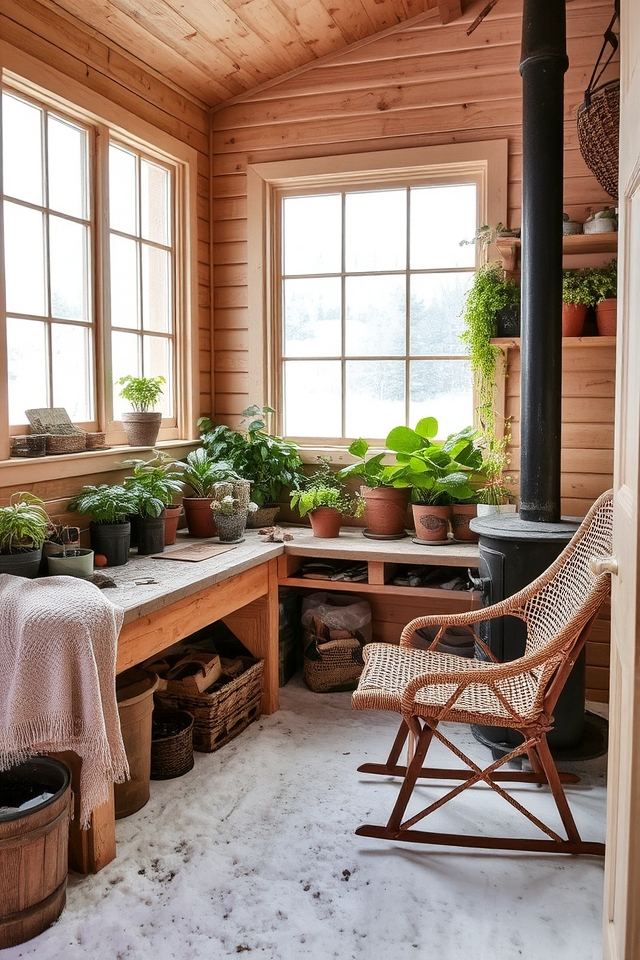
Designing a winter potting shed can provide a cozy and functional space for gardening enthusiasts during colder months. Incorporate insulated walls and a small heater to maintain a comfortable temperature. Use large windows to maximize natural light, allowing plants to thrive even in winter. Include ample work surfaces and built-in storage for tools and supplies. Adding a wood-burning stove can create a warm atmosphere, making it a perfect retreat for hobbyists and a delightful spot for winter gardening activities.
Conclusion
Incorporating these garden ideas for cold climates can transform your gardening experience, allowing you to enjoy fresh produce year-round. Did you know that nearly 40% of all vegetables can be grown in colder temperatures with proper care? By choosing cold-hardy plants and implementing techniques like raised beds and cold frames, you’ll not only boost productivity but also support biodiversity. Start your winter gardening journey today, and watch your garden thrive even in the chill of winter.



